
Martina Chudá
BEAUTYFIXION 2.0
Project Info
- 💙 ŠUM & Koniareň Gallery – KC Berehovo, Trebišov, Slovakia
- 💚 Marianna Brinzová
- 🖤 Martina Chudá
- 💜 Marianna Brinzová
- 💛 Peter Lančarič
Share on
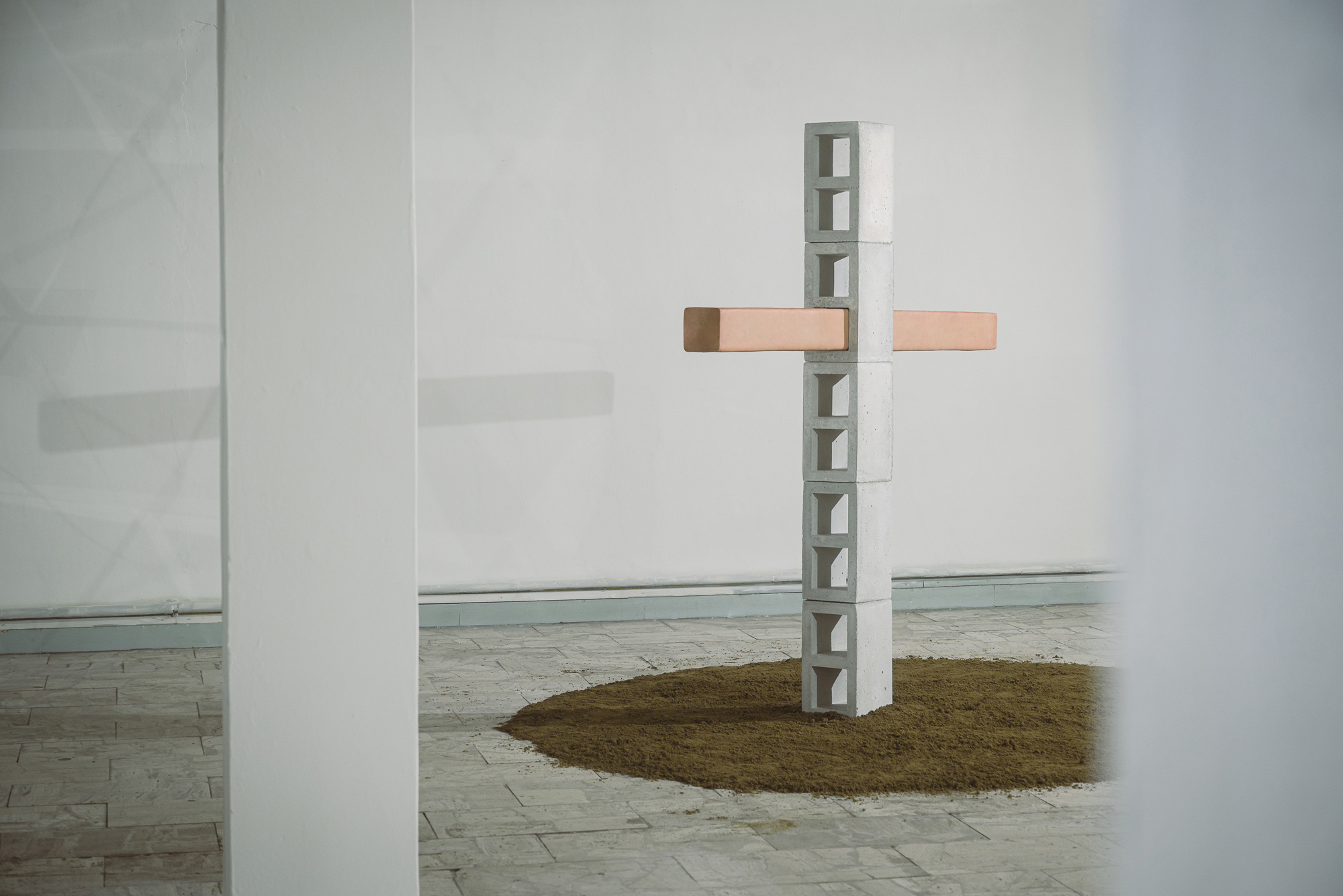
Advertisement
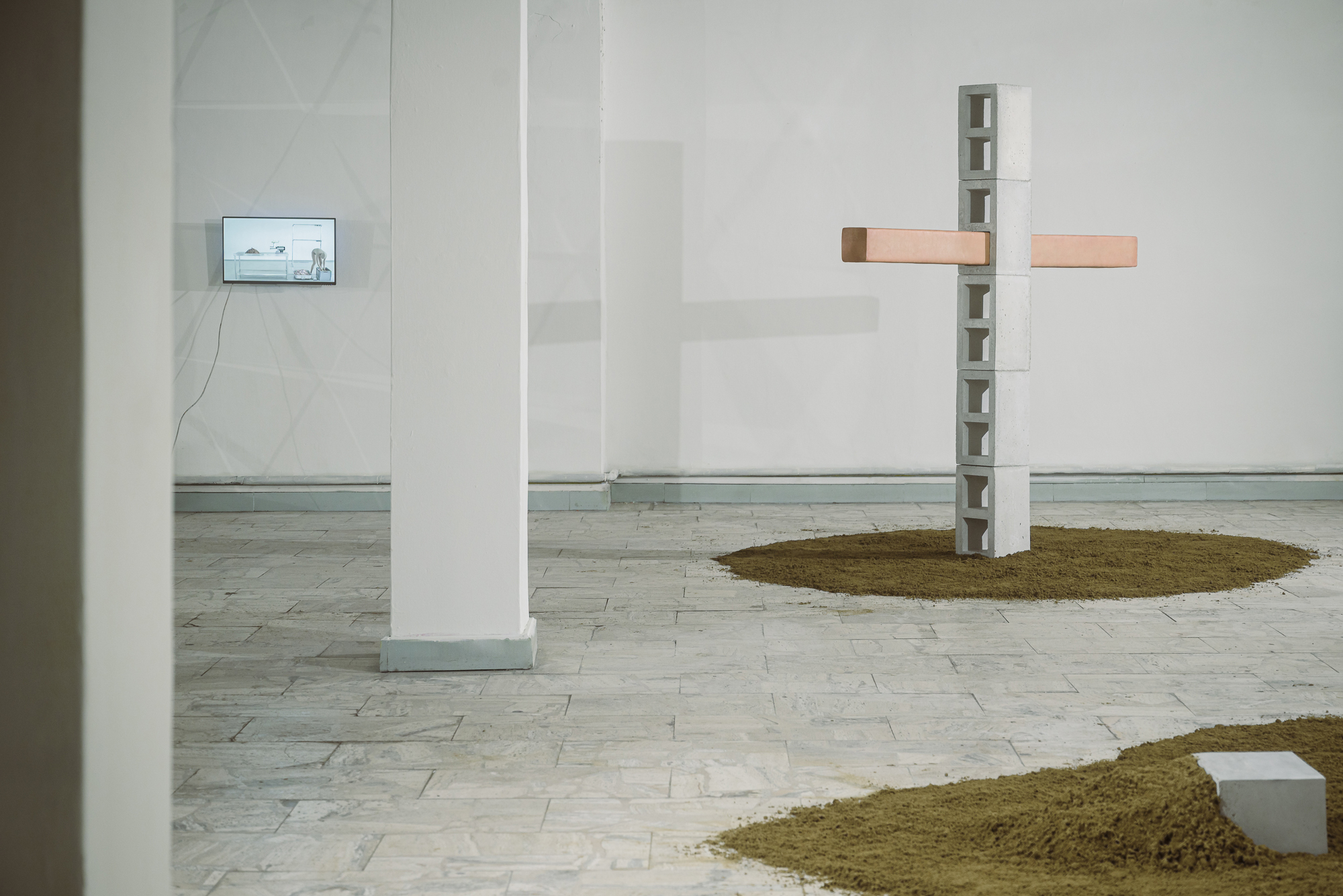

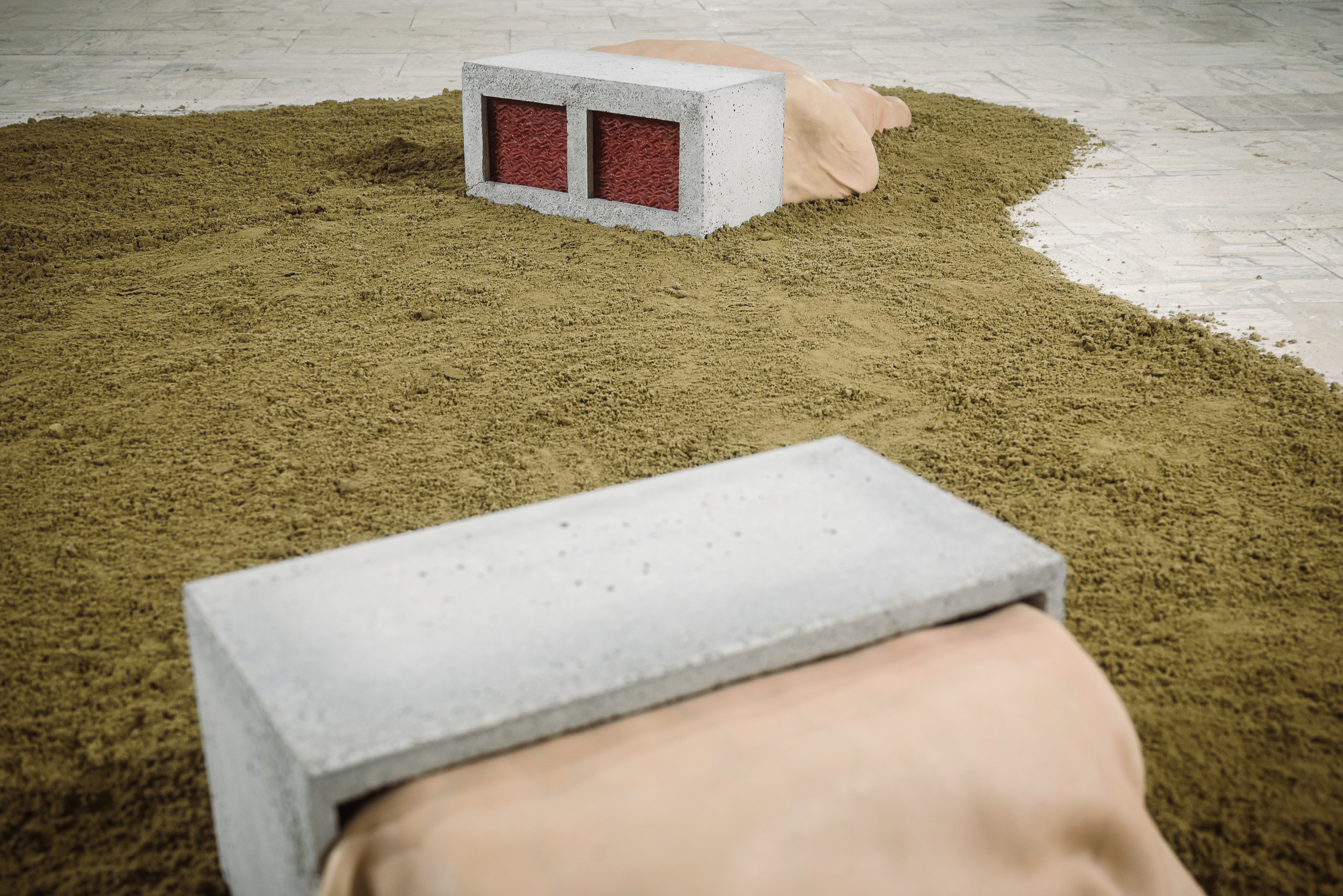
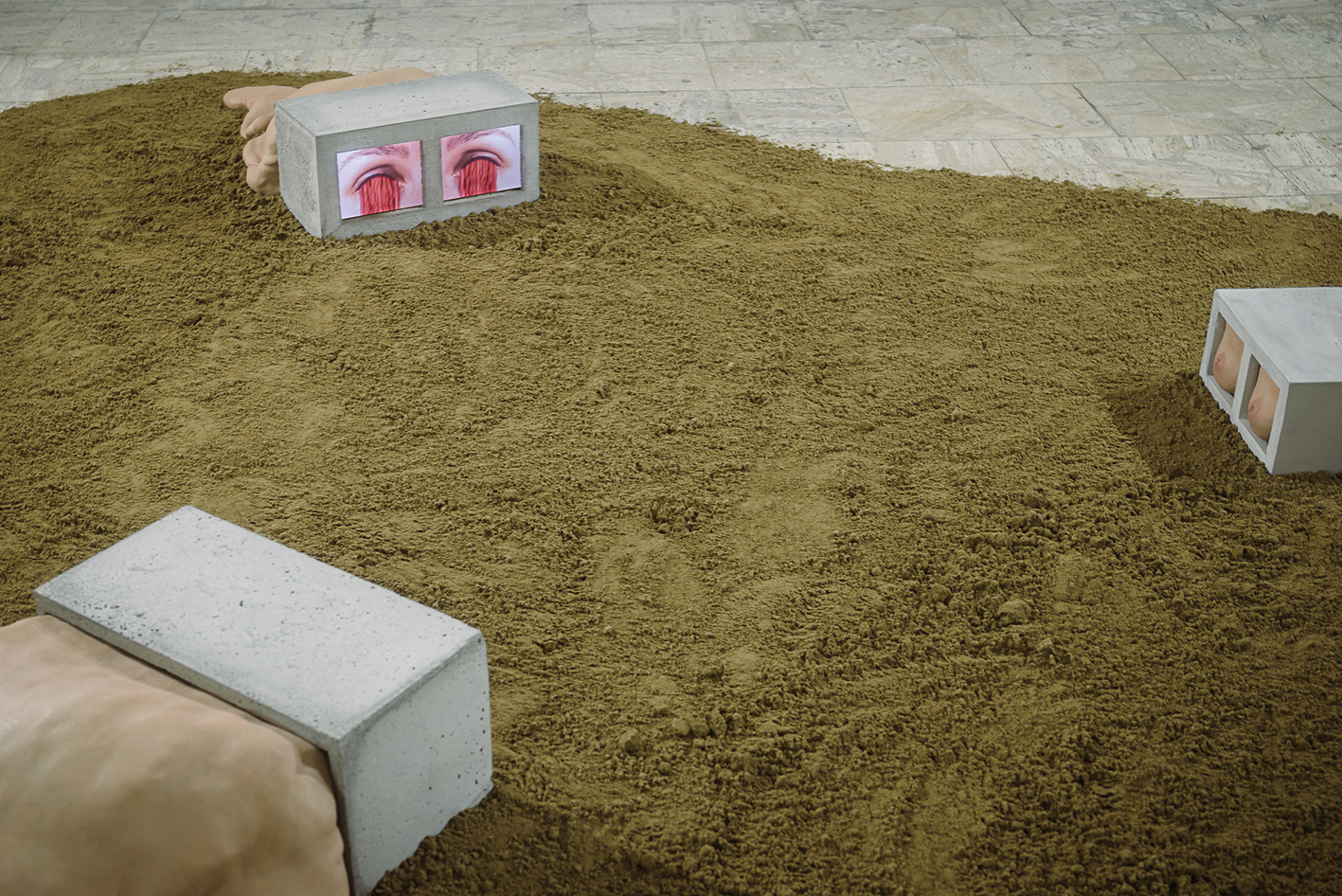
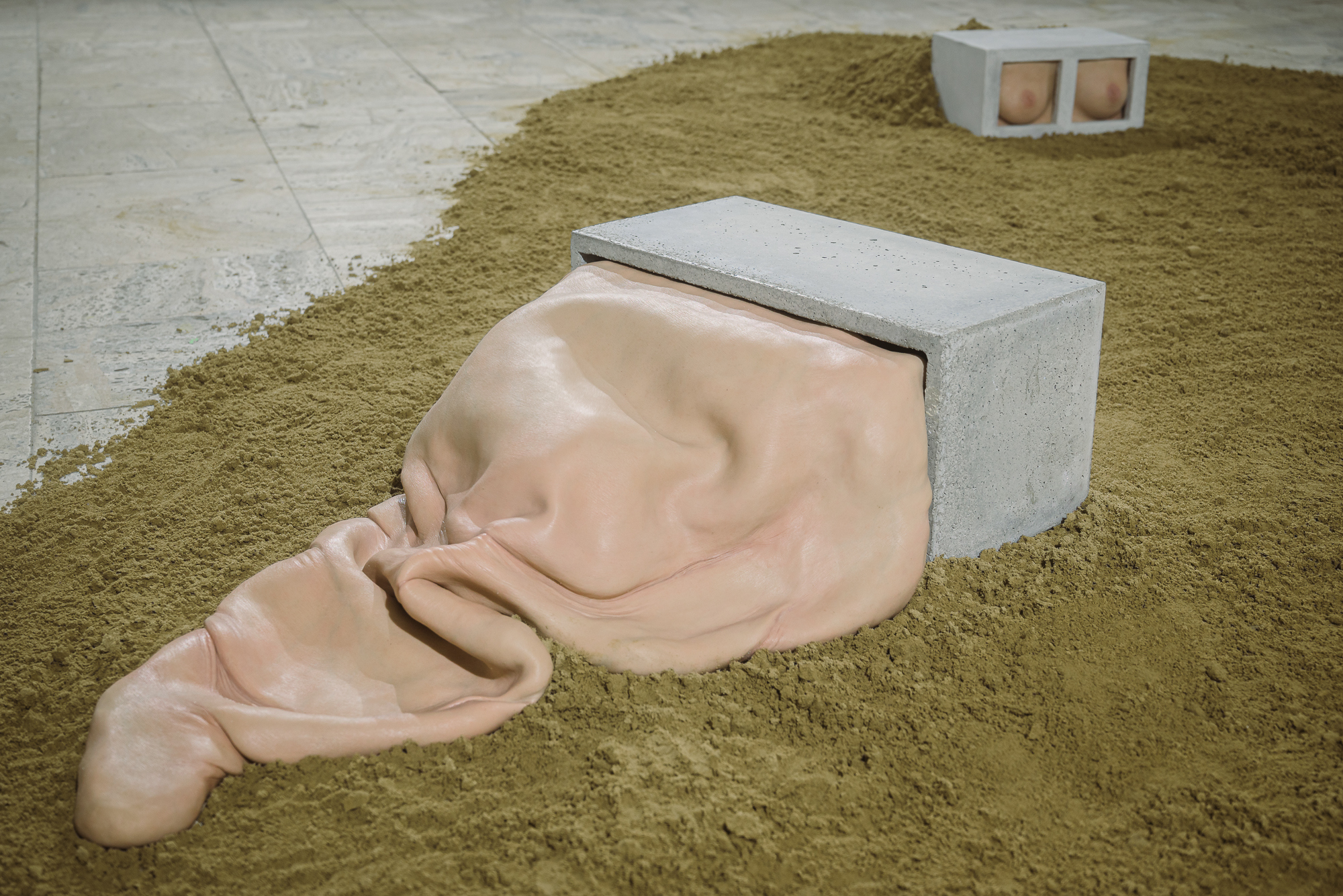
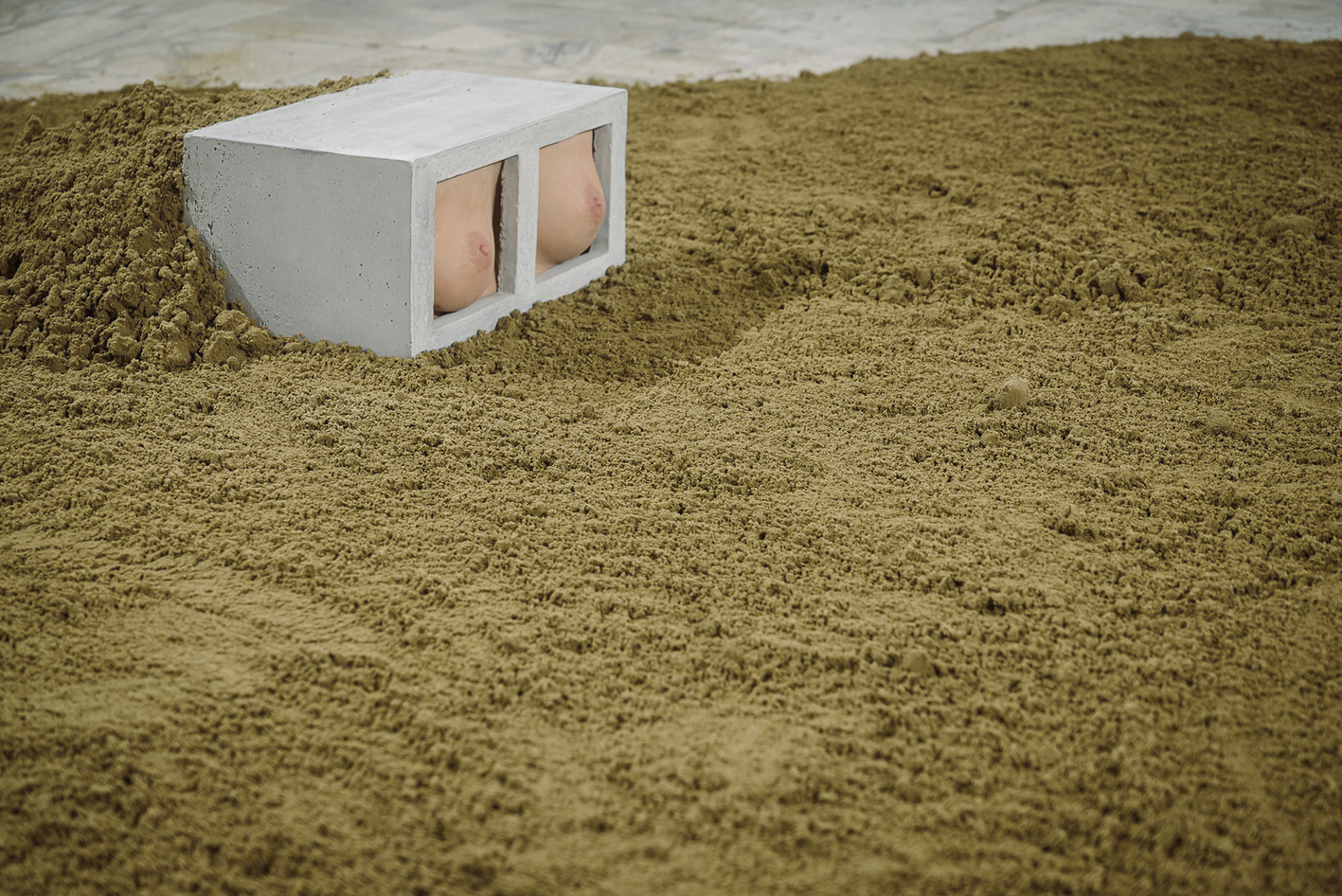


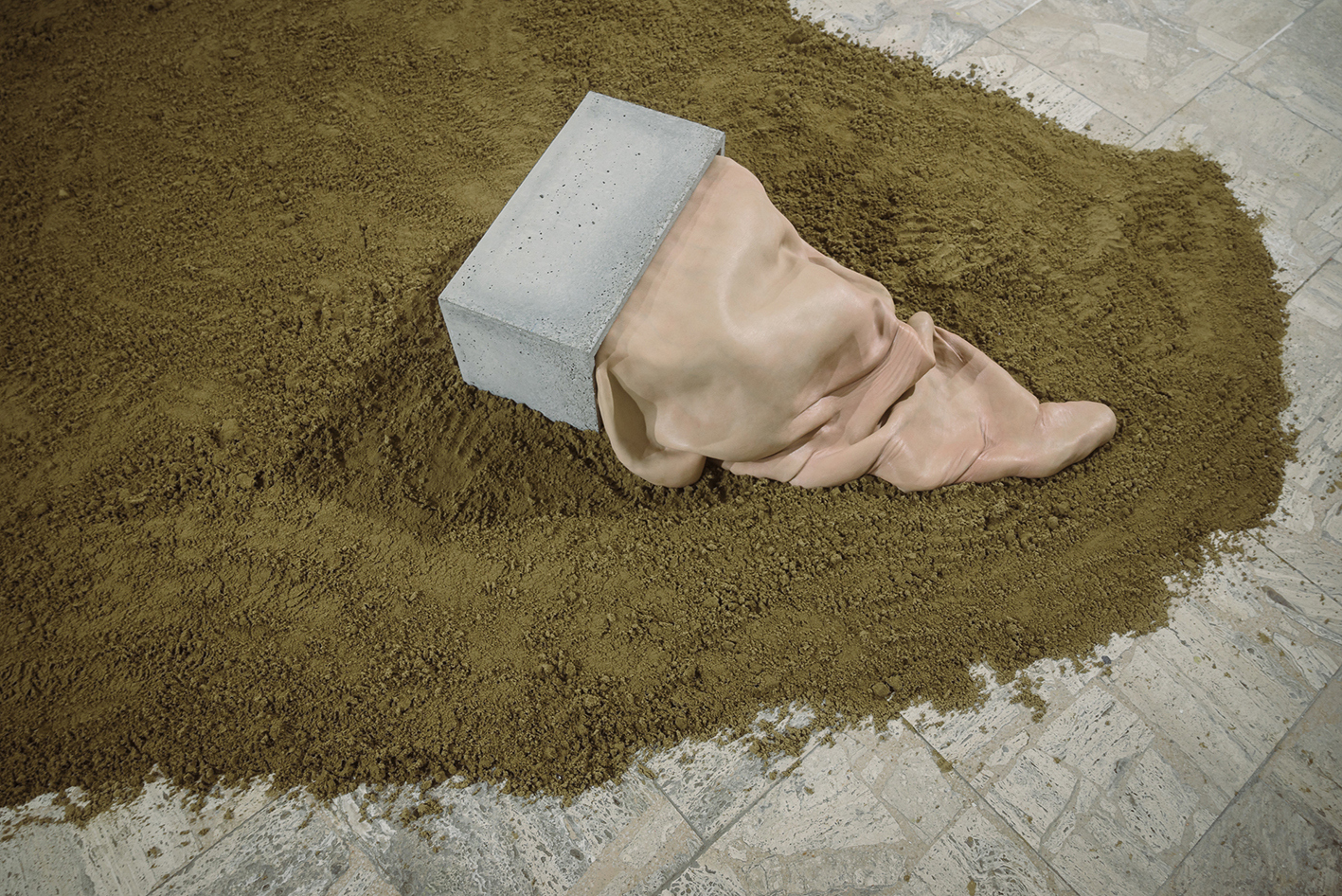
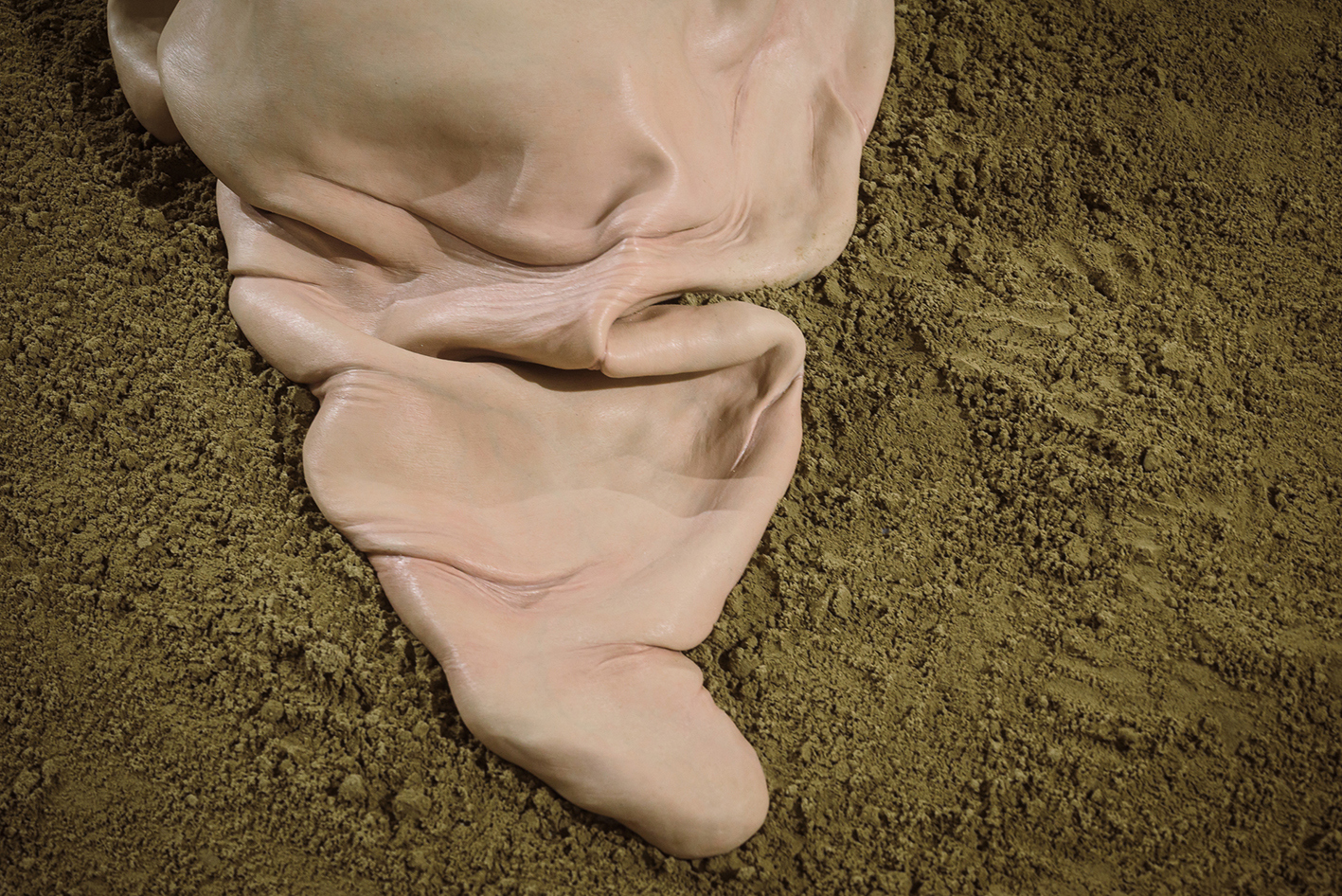

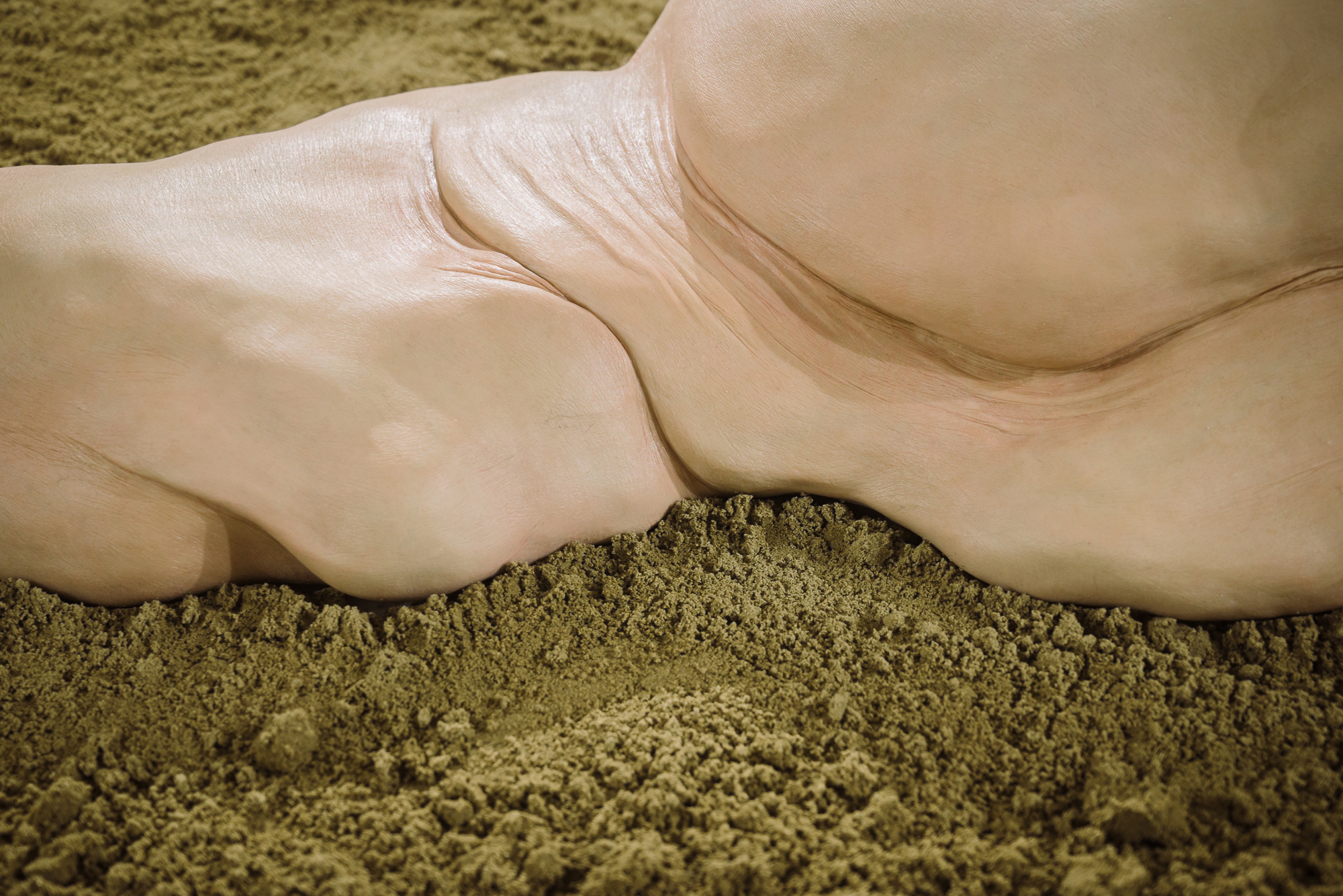
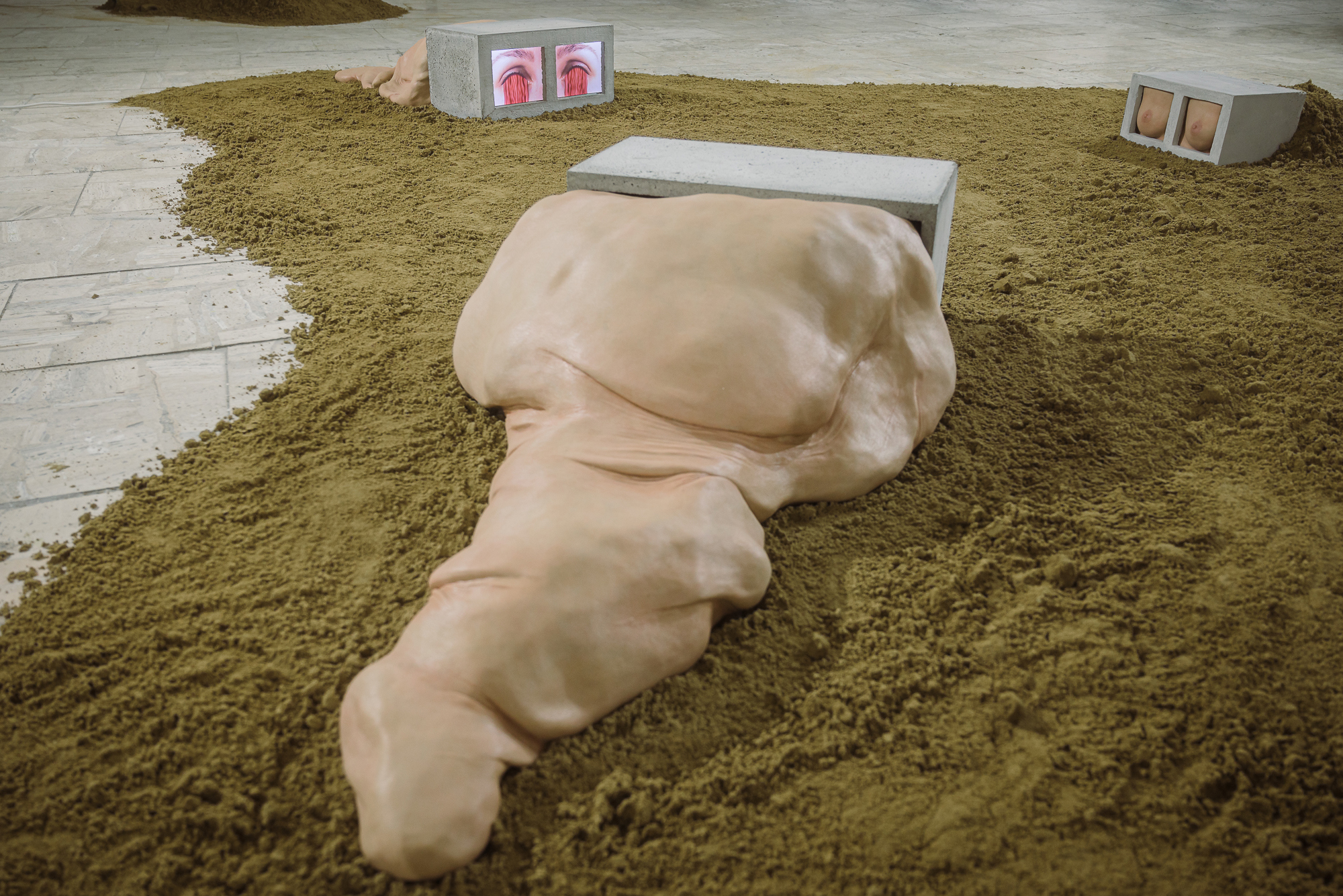
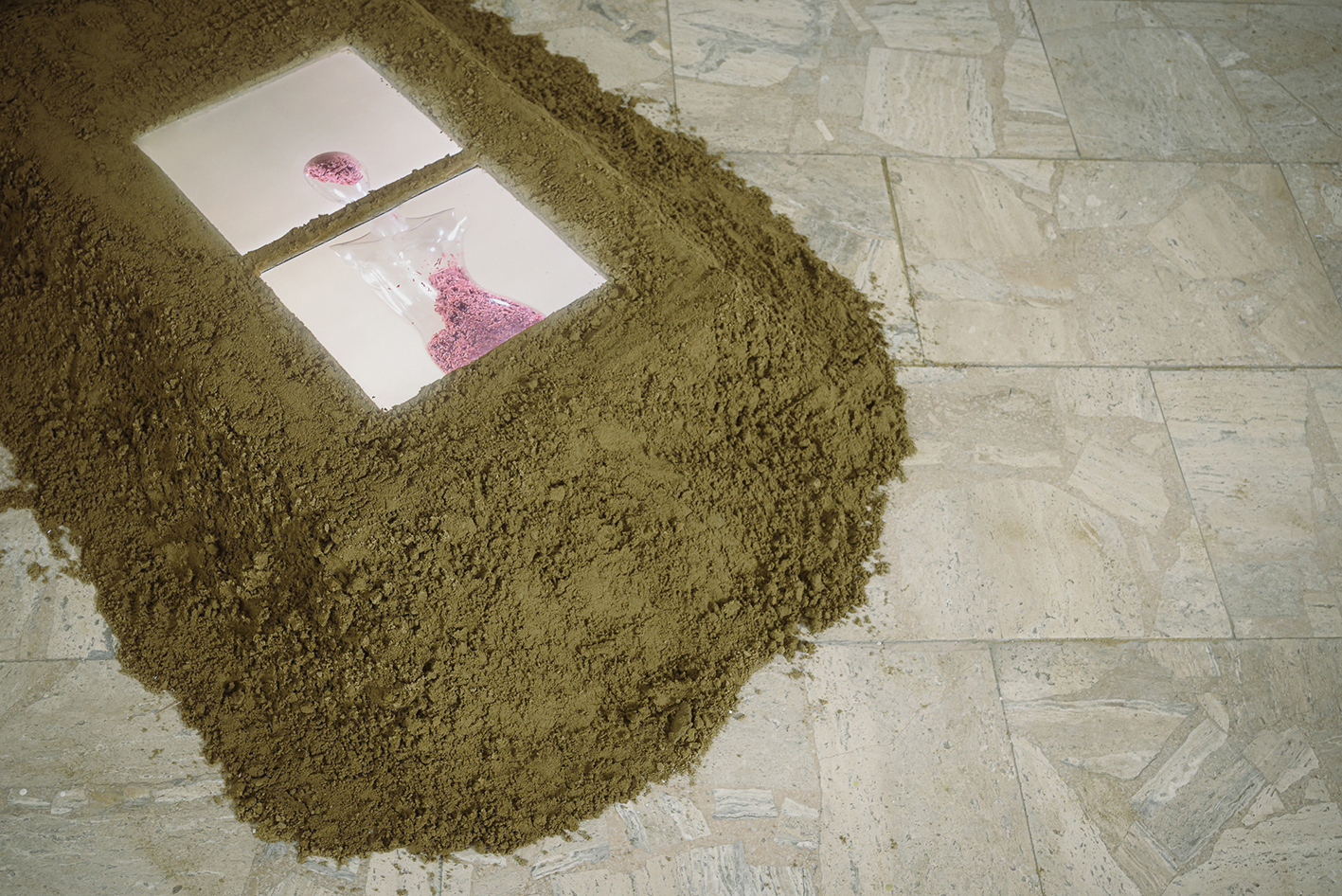
The Beautyfixion 2.0 exhibition by visual artist Martina Chudá (* 1990) was installed for the second time in the Berehovo Culture Center (also known as ŠUM & Nová Koniareň) in Trebišov, Slovakia.
Through the exhibition, Martina Chudá deals with issues of the myth/ideal beauty, body, and self-presentation she subjects to criticism, the principles of feminism, and (her own) the experience of intimacy. Previously mentioned principles have formed the main elements of Chudá's creation for a longer period, and she cyclically returns to them. It thematically follows the older work called URGENCY ( 2018, video-performance rewarded with several awards), which also becomes a part of the exhibition. The newly created works (originated during the pandemic period, 2020 – 2022) support and deepen the idea of a given topic, and they are knotted with the older data work into one whole. The final multimedia output consists of objects, intermedial objects, videos, and video-performance.
Multilayered meanings, metaphors, working with the material and its contrasts, intermediality, criticism, hyperbola, a conceptual approach supported by material, communication with the viewer, perception of art as a tool for increasing human sensitivity, the need to explore the personal plane through the universal plane - these are all characteristics that depict the work of Martina Chudá. On the ideological level, the author primarily comes out of feminist theories and their critique directed towards traditional gender roles and gender stereotypes. Her reflections have global and simultaneously local character because she often subjects them to criticism of their own cultural identity.
She's dealing more specifically with a fixation on the outside/appearance, meeting certain standards not only visual but also gender – stereotypical roles, what is/is not female or male, and everything that deviates from the normal average – standards and with what is less acceptable or even unacceptable. Therefore, the concept of her works and the exhibition itself reflects several specific symbols and attributes, such as body and physicality, skin, cross, minced meat, sand, etc. Individual objects represent shapeless organisms crossed with parts of human bodies that look through concrete blocks, through the type of construction material the author manually creates - she doesn't use prefabricated/ready-made material. The artworks visually resemble a sort of hybrid, disturbing worm. There are also representations concretely associated with the perception of female beauty – female breasts violently pressed in or, on the contrary, growing out of concrete block's object. On the other hand, the object evoking the shape of the cross in the metaphorical and material plane reconnects organic, natural, and intrinsic with artificial/inorganic and normative. The installation also includes videos presented separately or as a part of objects.
Within the Beautyfixion, has been thus created a large-scale intermedial installation reflecting the phenomenon of perceiving the physical beauty (however, not only that, as the author always layers the contents/meanings) related to the dubious effort to so-called perfection – the ideal of beauty. Martina Chudá is reasoning that what was already criticized by the author Naomi Wolf in her publication The Beauty Myth (1991) from her period of time - has now unfolded into hybrid, disturbing, and sometimes even monstrous dimensions due to the influence of new technologies, media, and especially social networks. Myth is gaining its real and materialized (although in reality unrealistic) form while it's distorting the perception of reality and the world around us. It is an illusion that has spilled from the online world into offline space and vice versa. This illusion has become exceedingly toxic, affecting our physical and mental health and well-being. Obsession with appearance sometimes even results in destructive interventions into the integrity of the body and psyche of a person that is an individual (it is no longer true only for women) able to undergo because of some mythical ideal of beauty or perfection. He becomes a superficial consumer – a "surfer" devouring fictitious, false images that attack him through various retouching tools of computer programs, filters, edited photos, "fake" videos, etc., without deeper critical thinking about reality and necessity.
The very title of the Beautyfixion exhibition is a verbal toy – an anagram, where the part of the title "beauty" refers to beauty/ideal, while "fixion" evokes the word crucifixion as a metaphor of sacrifice to achieve a higher goal, which is related to the critical reference of the patriarchal tendencies of Christianity and the Church, which have been deeply anchored in our society for centuries. The phonetic meaning of the exhibition title also includes the word "fiction" as a hint that even if the idea of an ideal tries to appear as objective as possible, it is an illusion. The author is considering that paradoxically, this idea can - to a certain extent - be "materialized" through plastic surgery and its interventions, which also becomes a stimulus for her deeper critical thinking. At the exhibition, this reflection is in the material plane represented by the raw material of minced meat as a reference to drastic interventions of surgeries. In the case of minced meat's stream flowing out of the eyes instead of tears, it also points to the psychological dimension of this problem, which is associated, for example, with various eating disorders and depression.
The hourglass (silhouette shape in videos, sand on the ground) as a symbol of the passing time refers to the stigmatization of the natural process of aging and the endeavor to achieve the so-called eternal youth and immortality. The sand that forms the background of the entire installation makes visible the idea of the passage of time. It acts as a "spoiler" of temporality and is also one of the basic building materials of exposed concrete elements. The presence of sand in dreams is also usually interpreted as a symbol of fear from aging.
In video-performance URGENCY, the author repeatedly measures her own weight, which she consequently balances with the machine-made objects from meat, a semi-finished product created by herself. She takes on herself a genderless form by referring to a kind of reduction of individuality and diversity (not only) of bodily features and characteristics of the entire spectrum.
The conceptual form of artworks presented at the exhibition in the form of a multimedia aggregate is enriched within the implementation, especially in terms of crafts/technology, by working with more traditional sculptural techniques (modeling, shaping, and casting from the final material). The author deliberately uses the symbolic value of materials and their contrasts. She works with silicone - which directly refers to physicality and functions with an organic, almost vivid impression - to achieve a hyper-realistic effect. She connects these silicone parts with concrete, specifically concrete blocks, which already ironically remind the ductility with their name, but in fact, they are only an inorganic constructional element, which is a form and a kind of other established "standard" at the same time. The aim of the Beautyfixion exhibition has become through ideological and material backgrounds pointing out current issues, activating the critical thinking of the viewer, and expanding his perception in the field of this topic, which Martina Chudá eventually achieved on several levels. The exhibition reflects a consumer culture that is too fetishistic to body and appearance. At the same time, it also directs our attention to the topicality full of false images and ideals, which are often rooted much deeper - in problematics such as power, guidance, surveillance, and punishment...
The project was supported from public sources by the Fund for the Promotion of the Arts. Presented artworks of the author Martina Chudá were supported by the Fund for the Promotion of Art from public sources in the form of a scholarship.
--
Raw meat used in the process of creating the artworks/videos was donated to the dog shelter in Trnava or to the author's friends who feed their dogs with the BARF diet.
Marianna Brinzová




